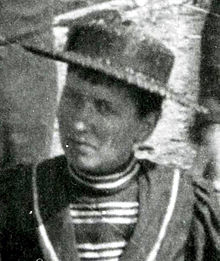Phycology that, ladies!
In the 19th-century, the field of phycology, like the field of botany, was open(ish) to women scientists. As long as they didn't get too uppity.
Hurrah, good for you, plants and algae! Well done! There was a sisterhood of ladies who could say Phycology that! and mean it in professional sense, and among them was early #womeninSTEM Josephine Tilden (above, circa 1893).
She was the first female scientist employed by the University of Minnesota and, in 1901 she freakin' established the Minnesota Seaside Station on Vancouver Island's Botanical Beach. (As a thwarted wannabe marine scientist myself, you know therefore that of course I LURV her.)
 |
| "Young women studying at the Minnesota Seaside Station were advised to wear 'a short skirt, about 12 inches from the ground' for fieldwork," according to Hakai Magazine's great feature on Tilden. |
Tilden's online profile at the College of Biological Science at The University of Minnesota starts with this delight of a sentence, "In 1900, traveling by canoe, she discovered a largely uninhabited stretch of coastline..."
What have I done lately? Not algology, nor travel by canoe. Damn shame. Algology could have been mine! Once again, born in the wrong era. Bun, boater, and short skirt about 12 inches from the ground is a good look on me. Is my uppity showing?
In 1910, Tilden published:
In 1935, she published The Algae and Their Life Relations, Fundamentals of Phycology, and it was reviewed thusly by one Mr. Gilbert Smith, "Instructors presenting a course on the algae have never had a comprehensive textbook in English to which they could refer the student for material to supplement the lectures and laboratory work. Professor Tilden's book is designed to meet this need." MIC DROP.

Thanks for this! Looking forward to more stories.
ReplyDelete